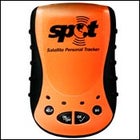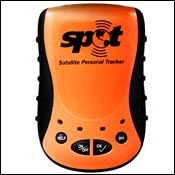Well, you have at least taken that first step. I remain wildly ambivalent about locating devices, or many self rescue” gadgets. Yes, they often work. But are they apt to lead you to try things you wouldnt otherwise try? I know that being on my own in the wilderness makes me considerably more cautious. On the other hand, I was simply hiking along a trail a month back and rolled my bad ankle. It wasnt serious, but it could have beenand I was a long ways from anyone. So theres that.
SPOT Satellite Messenger
 SPOT Satellite Messenger
SPOT Satellite MessengerAnd then there is the fact that technology HAS changed, becoming more affordable and simpler. Hence your question about the TracMe and SPOT.
The new, Australian-developed TracMe ($150; tracme.com) is about the size of baseball. When activated, it sounds out a radio signal every 15 seconds that says Help emergency!” Search and rescue units using special kits supplied by TracMe, or with a radio tuned to the TracMe frequency and a GPS, can use the signal to hone in on the sender. The advantage to this is that TracMe is simple, uses a widely-monitored frequency, and reduces the risk of accidental notification should a satellite-based beacon ping a satellite. Once that happens, a search is underway with no callback. Its also very light, at 1.6 ounces.
The down side is that someone really has to be looking for you before the TracMe beacon works. So if youre out on a long trip and break your leg on the second day, thats not so good. Plus, as a radio device, it is line-of-sight. I can picture situations where even if rescuers are fairly close, they wouldnt pick up your signal. But overall I think its a good concept and well-suited for day hikers and people such as that.
The SPOT Satellite Messenger ($170; findmespot.com) is shaped a little like a PDA. It sends signals to a proprietary satellite system operated by Globalstar, the parent company of SPOT. Whats really interesting about the SPOT gadget is that it uses GPS satellites to constantly update your location. And it can be used to do different things, such as calling for help or just sending a signal so that friends and family can track your location on a map. If a distress call is sent, however, the SPOT device promptly notifies searchers and pinpoints your location to 20 feet. Battery life is impressive: 14 days in track” mode, and seven in 911″ mode. Its a little heavier than the TracMe, but not too bad at about 7 ounces. And it works anywhere on the planet, or very close to it. The biggest drawback: You pay a fee to be in the club.” The SPOT service is $99/year, plus $49/year for the tracking feature. But for folks on long trips or who might need help RIGHT AWAY, I like SPOT. Its easy to use, compact, and affordable. I think its technology is better and more reliable than the TracMe, too. I might have to buy one.
Check out the new 2007-2008 Winter ���ϳԹ��� Buyers Guide, packed with reviews of more than 300 new gear must-haves. Its available on newsstands this month.


